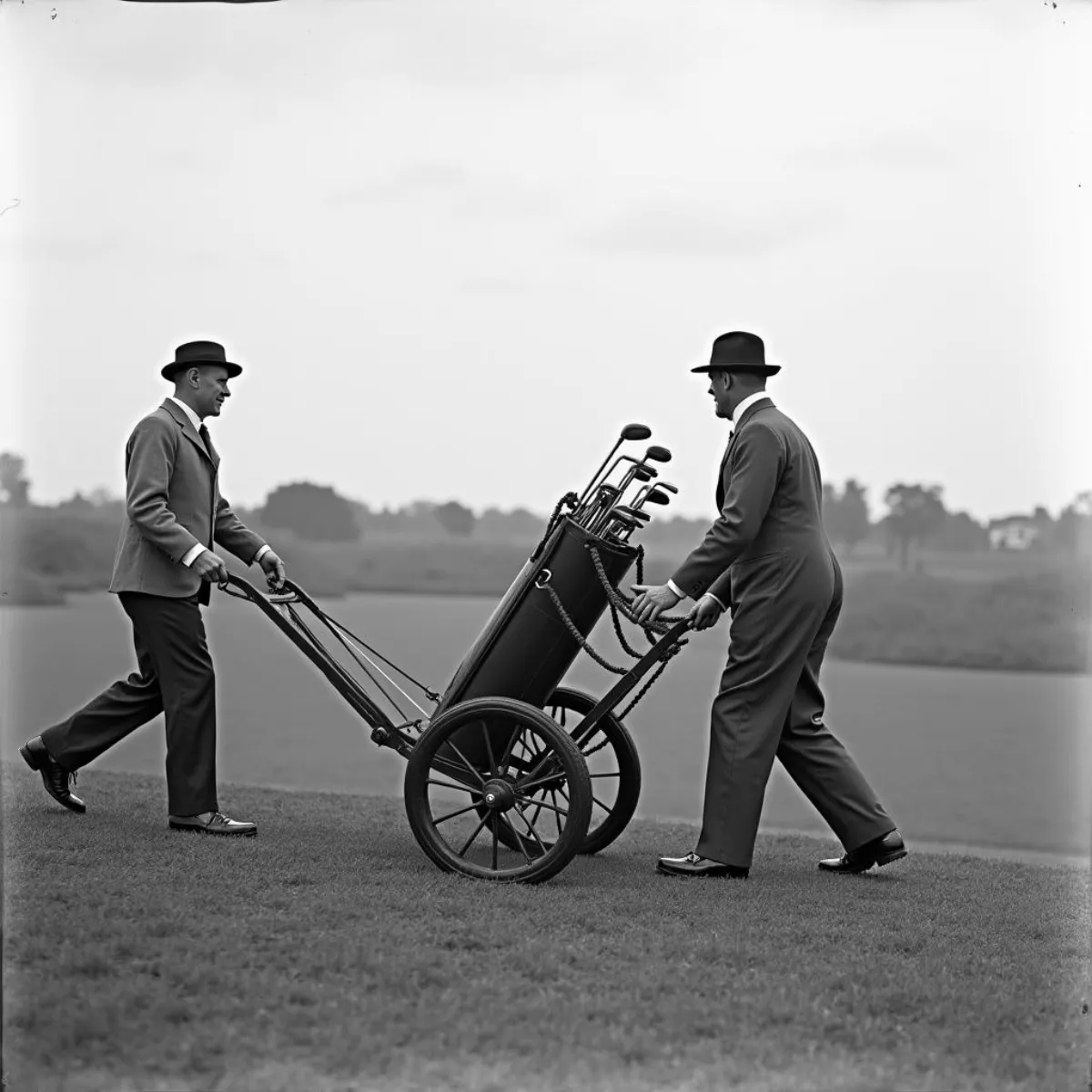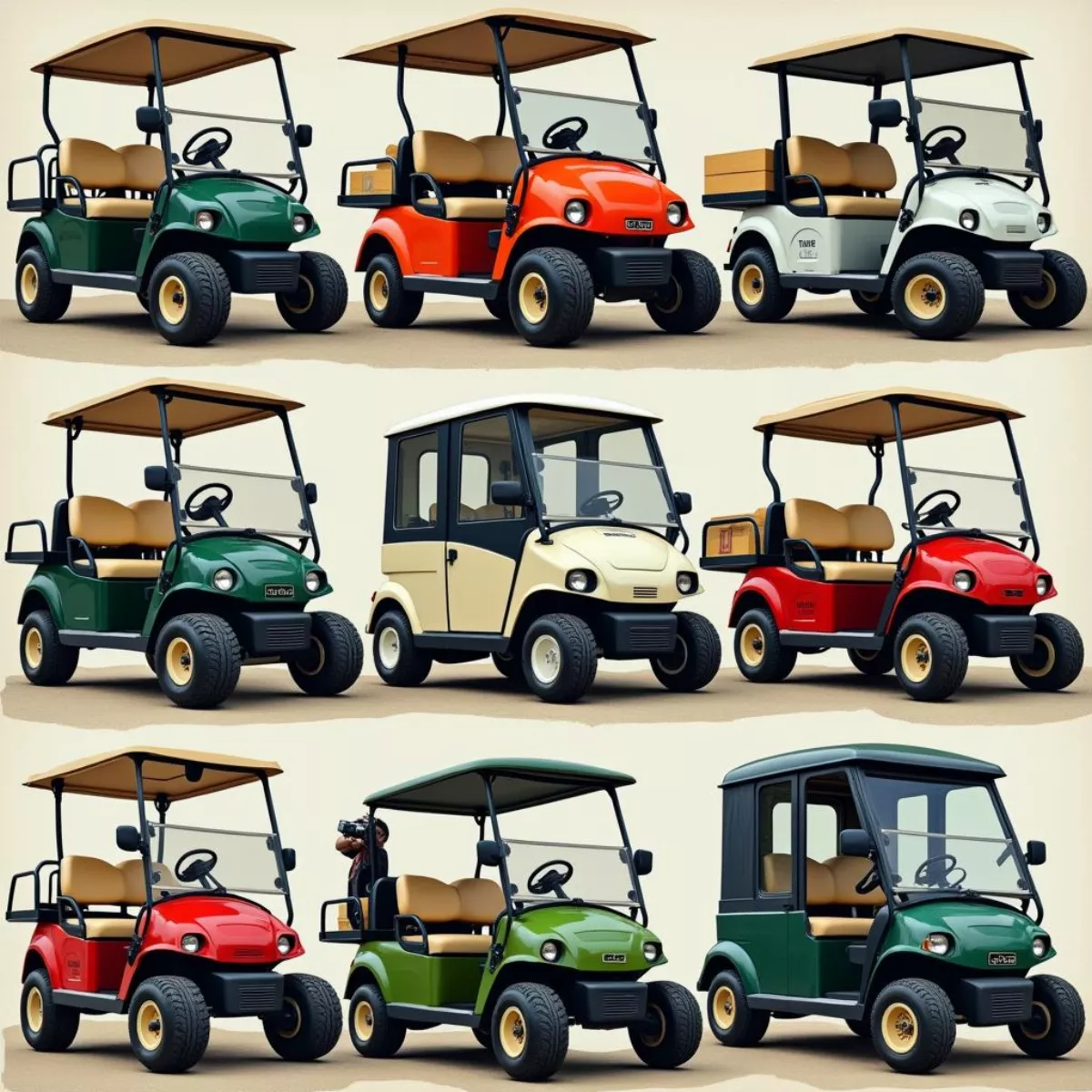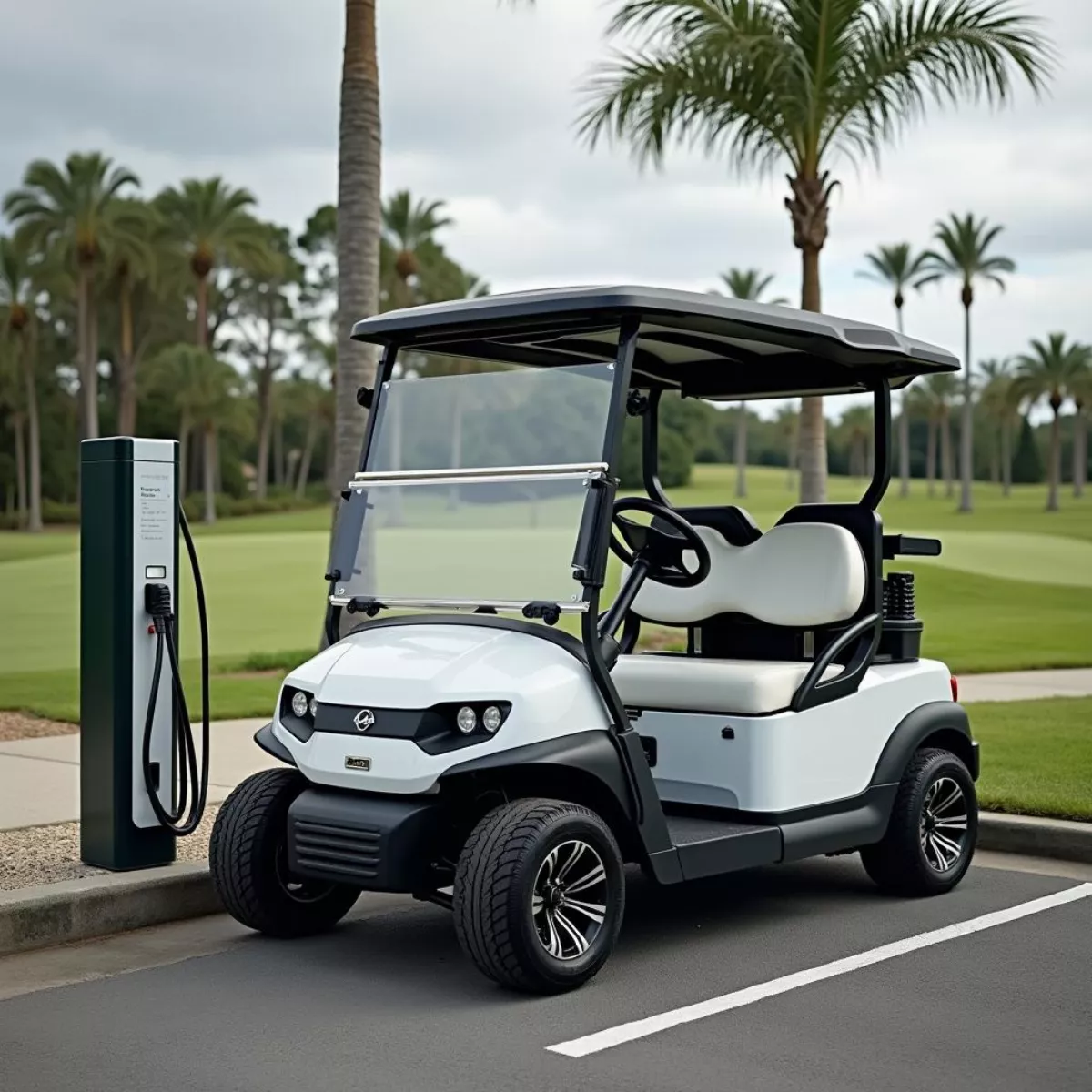Golf carts have become an integral part of the golfing experience, providing ease and accessibility for players on the course. But have you ever wondered who invented golf carts and how they came to be? In this article, we will explore the fascinating history of golf carts, their invention, and their evolution to what they are today.
The Early Beginnings
Golf, a sport that dates back centuries, has evolved through the ages. It is widely believed that the origins of golf can be traced back to the 15th century in Scotland. However, in the early days of golf, players had to walk the entire course, carrying their clubs and gear. Let’s take a closer look at the evolution of golf transportation.
- Before Golf Carts: In the late 19th century, the game became increasingly popular. Players used hand-pulled carts, which were not very practical. They were usually cumbersome and required a lot of effort, especially on hilly courses.
 Hand-pulled golf carts
Hand-pulled golf carts
The Birth of the Golf Cart
The modern golf cart is believed to have been invented in the 1930s by Merle Williams, who created the first electric golf cart in 1932. This invention was groundbreaking, marking the transition from manual carts to motorized vehicles on the golf course.
Williams started by modifying a small electric vehicle to accommodate golfers and their clubs. The idea quickly gained traction, and soon golf courses began to adopt golf carts to offer players a more comfortable experience.
Growth and Popularity
As golf carts became more popular in the late 20th century, they began to evolve. Manufacturers developed various models catering to automation and comfort, enhancing golfers’ overall experience.
Key Innovations in Golf Cart History
- 1950s: The advent of gas-powered carts, such as the one produced by Harley-Davidson, expanded options for golfers. These carts could traverse rough terrains more easily than their electric counterparts.
- 1960s: The introduction of the EZ-Go golf cart brought new features like cushioned seats and improved steering, making rides smoother.
- 1970s-1980s: Golf carts transitioned from basic utility vehicles to stylish modes of transportation on the course, with options for various customizations, including paint jobs and accessories.
- 1990s-Present: With advancing technology, carts became more eco-friendly, featuring zero-emission models and increased safety features.
 Evolution of golf carts collage
Evolution of golf carts collage
Golf Cart Features
The modern golf cart offers a range of features designed to enhance usability and comfort, including:
- Storage Space: Ample room for clubs and personal items.
- Comfort Seats: Cushioned seats that provide a comfortable ride.
- Advanced Controls: Integration of GPS systems and touchscreens for better navigation.
- Electric Models: Offering an environmentally friendly option without sacrificing performance.
Table: Evolution of Golf Carts
| Year | Key Development |
|---|---|
| 1932 | Merle Williams creates the first electric golf cart. |
| 1950s | Gas-powered carts introduced by Harley-Davidson. |
| 1960s | EZ-Go revolutionizes cart design with new features. |
| 1970s-80s | Customization options become popular. |
| 1990s-Present | Eco-friendly batteries and advanced technology. |
Golf Cart Uses Beyond Golfing
Though initially designed for traversing golf courses, golf carts have found many uses outside of the golf world, including:
- Resorts and Hotels: Providing transportation for guests.
- Large Properties: Useful for large estates or farm operations.
- Industrial Use: Utilized in warehouses or factories for transport within large grounds.
- Sporting Events: Maintaining accessibility in large venues.
 Golf cart uses beyond golfing
Golf cart uses beyond golfing
The versatility of golf carts highlights their significance in various fields, proving they are not just limited to the golf course.
Environmental Impact
With increasing awareness of environmental concerns, manufacturers are focusing on producing more sustainable models. Electric golf carts have surged in popularity due to their eco-friendly features, such as:
- Zero Emissions: Electric carts contribute significantly less pollution.
- Low Noise Levels: Quiet operation that allows for a better golfing experience.
Big brands are focusing on innovation to improve battery life and charging options, further promoting eco-friendly initiatives.
 Electric golf cart charging at a station
Electric golf cart charging at a station
Key Takeaways
- Invention Timeline: Merle Williams invented the first electric golf cart in the 1930s, leading the charge for innovation in golf transportation.
- Varied Features: Modern golf carts come with customizable options, including GPS and advanced storage, to enhance the golfing experience.
- Environmental Advantages: Electric golf carts contribute to a cleaner planet, making them a preferred choice among golfers today.
FAQ Section
1. When was the first golf cart invented?
The first golf cart was invented in the 1930s by Merle Williams, who created an electric model.
2. How have golf carts evolved over the years?
Golf carts have evolved from manual hand-pulled carts to advanced electric and gasoline-powered models featuring comfortable seating and technological integrations.
3. What are the primary uses of golf carts today?
While originally designed for golf courses, golf carts are also used in hotels, large properties, industrial sites, and sporting events.
4. Are there environmentally friendly golf cart options available?
Yes, many manufacturers now offer electric golf carts, which produce zero emissions and contribute to a greener environment.
5. What features should I look for when purchasing a golf cart?
Key features to consider include storage space, cushioning in seats, advanced controls (like GPS), and the type of power source (electric vs. gas).
6. How much do golf carts typically weigh?
Most golf carts weigh between 500 to 1,000 pounds, depending on their make and model.
7. Can golf carts be customized?
Absolutely! Many manufacturers offer customization options including color, seating, and added accessories.
8. Where can I rent golf carts?
Most golf courses have golf carts available for rent, and many resorts and recreational facilities offer rentals as well.
9. Do golf carts require special registration?
Registration requirements can vary by state or region. It’s essential to check local laws regarding golf cart operation on public streets.
10. What is the average lifespan of a golf cart?
With proper maintenance, a golf cart can last anywhere from 10 to 20 years.
By understanding the history and evolution of golf carts, you’ll appreciate the comfort they provide while playing golf. They have transformed the experience on the course, offering convenience and enjoyment to golfers worldwide. As electric and eco-friendly options continue to grow, this remarkable invention will surely have a lasting impact on the sport for years to come.